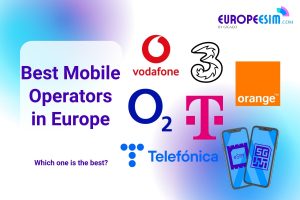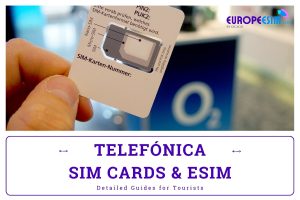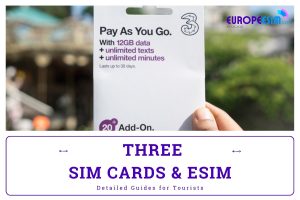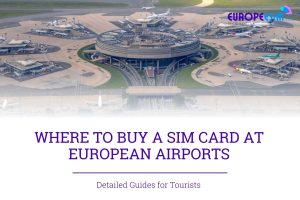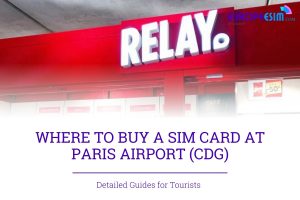Staying connected to the internet is essential for many tourists when traveling in Europe. If you’re still unsure about how to get good mobile internet in Europe, this article is here to help. We assist you in discovering the ideal choice for your needs, understanding the pros, cons, and expenses associated with various internet connectivity options while traveling in Europe.
Table of Contents

I. Quick Brief of Mobile Internet in Europe: Coverage and Speed
According to Statista, average mobile network connection speeds in Western Europe in 2022 was 54.4 Mbps, and is expected to increase by 8 Mbps in 2023.
- By 2023, in Europe 5G mobile connections will account for nearly 90 percent of mobile connections.
- If you buy a mobile plan from an EU country, you can use it in other EU countries without extra fees, according to the “Roam Like at Home” policy.
- Some Europe mobile network operators may have fair usage policies to limit the amount of high-speed data you can use before your connection speed is reduced.
- France, Germany and some European countries have specific regulations or restrictions on internet usage, such as content filtering or limitations on certain online services.
- Vodafone is one of the largest mobile network operators in Europe, offers affordable data plans for travelers
1. Coverage
Internet coverage in Europe is generally widespread and reliable, particularly in urban areas and popular tourist destinations. However, coverage may vary in more remote or rural regions.
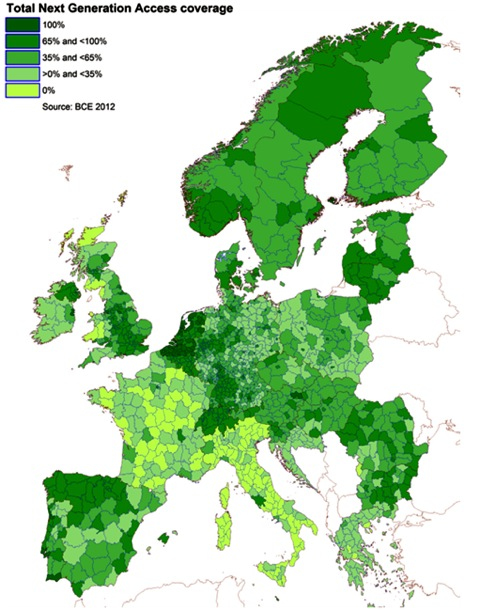
- Western Europe: excellent mobile internet coverage with high-speed 4G and 5G for major cities and popular tourist destinations.
- Eastern Europe: reliable 4G networks in capital cities and larger urban areas.
- Northern Europe: excellent mobile internet coverage, providing fast and reliable internet access.
- Southern Europe: good mobile internet coverage, high-speed 4G networks. In rural and less populated areas, coverage may be slightly lower.
In conclusion, Europe generally offers excellent mobile internet coverage for tourists across its various regions. So, if you travel to Europe, no need to worry about losing connection or interrupting web surfing.
2. Speed
Mobile internet in Europe is generally fast and reliable for tourists to search for information, watch videos, pay bills, book accommodation, and reserve flights.

- Europe offers a wide range of internet speeds for tourists. Some countries have high-speed internet, while others have relatively lower speeds.
- Countries like Austria, Denmark, Norway, the Netherlands, Finland, Estonia, and Sweden offer relatively higher average data download speeds.
- Some countries in Europe, such as Portugal, Spain, Greece, Italy, and the Czech Republic, have lower average data download speeds.
Our recommendation: Check the coverage and availability of mobile internet services of your destination in advance to understand the potential speed and reliability of internet connections.
II. How To Get Mobile Internet In Europe – Best Ways & Costs
There are several ways for tourists to sget mobile internet in Europe, including roaming, pocket WiFi, public WiFi, SIM Card and eSIM.
1. Prepaid SIM card for Europe
- A prepaid SIM card allows you to use cellular services by paying in advance for a specific amount of data, calls, and texts.
- Suitable for: short-term visitors, budget travelers, data-dependent travelers
- Where to buy: airports, mobile network provider stores, convenience stores.
- Pricing: difference between providers, and the specific package. A Three PrePaid Europe sim card 12GB data+3000 minutes+3000 texts for 30 days with FREE ROAMING costs around $19.
2. Prepaid Europe eSIM for tourists
- A Prepaid Europe eSIM is a digital SIM card that can be downloaded and activated on eSIM-compatible devices without the need for a physical SIM card. It allows tourists to access mobile services without the hassle of purchasing and inserting a physical SIM card.
- Suitable for: who have eSIM-compatible devices, and want the convenience of activating a SIM card digitally without needing a physical card or visiting a store.
- Where to buy: Official websites of mobile operators, online marketplaces, third-party retailers.
- Pricing: depending on the provider, package and duration of validity. For example, Vodafone eSIM for 30 days in Europe costs about $25 with 25GB high-speed data.
3. Roaming with your primary SIM card
Roaming with your primary SIM card refers to using your existing mobile phone number and SIM card from your home country while traveling in Europe.
- Suitable for: Tourists prefer using their own phone number
- Where to buy: Use directly on your primary SIM card.
- Pricing: Depending mostly on your domestic cellular operator, for example, Orange roaming costs in France can rangefrom $5 to $10 per day.
4. Pocket WiFi
A pocket WiFi is a small, battery-powered device that provides wireless internet connectivity on the go. It acts as a personal WiFi router, allowing you to connect multiple devices, such as smartphones, tablets, or laptops to the internet simultaneously using a single mobile data connection.
- Suitable for: travelers prefer not to rely on public WiFi networks.
- Where to buy: Online retailers such as Hip Pocket WiFi, GlocalMe, mobile network providers.
- Pricing: Difference between buying and renting. For example, pocket WiFi rental in Spain costs $5.45 per day.
5. Free WiFi
WiFi in Europe is easy to find in public spaces. However, WiFi in some places is still available for paying customers. Moreover, public WiFi can provide an easy way for identity thieves and cybercriminals to monitor what you’re doing online and to steal your passwords, and your personal information.
- Suitable for: tourists who want to access the internet on their WiFi-enabled devices.
- Where to find it: WiFi can be found in numerous places throughout Europe, including: accommodation, cafes and restaurants, airports and train stations, some public areas such as parks, squares, and transportation hubs
- Pricing for paid wifi can range from $1 to $10 per hour or $5 to $20 per day, depending on the location and service provider.
The comparison table below of ways to stay connected in Europe will help you have a more general overview and help you make the correct decision to suit your needs.
| Connectivity Option | Pros | Cons |
| Prepaid SIM Card | Local number, easy purchase, wide coverage | Requires new SIM, limit data/validity |
| Prepaid eSIM | No physical SIM, convenient setup | Limited device/coverage support |
| Roaming | Maintains home number, no new SIM | Can be expensive, plans vary |
| Pocket WiFi | Connect multiple devices | Extra device, battery life limits |
| WiFi | Free in many places | Relies on public access, security risks |
Our recommendation: So, if you want to actively get the Internet, protect your private info, take advantage of local rates, affordable calls and messages, you can use a Europe SIM card. But, if you have an eSIM-compatible device, it is highly recommended to use a Europe eSIM because of its benefits: no roaming charges, convenience, flexibility, stay connected wherever you are, easy to use, and future-proof your travel.
III. Best Mobile Internet Providers In Europe
After choosing the way for mobile internet in Europe, it’s time to talk about a list of European mobile internet companies to compare options and make the best choice for your trip.
1. Vodafone
- Vodafone is one of the largest mobile network operators in Europe
- Operate strongly in Northern & Central Europe and Southern Europe
- Pros: extensive coverage, High-Speed connectivity, network stability, value-added services
- Cons: coverage may be limitations in more remote or rural areas

2. Telefonica (O2/Vivo/Movistar)
- O2 is the UK’s largest mobile network operator
- Operate strongly in several European countries: UK, Germany, Spain, and the Czech Republic.
- Pros: wide network coverage, high-speed connectivity, competitive pricing, additional services and perks
- Cons: limited coverage in remote areas, fair usage policies for unlimited data plans.
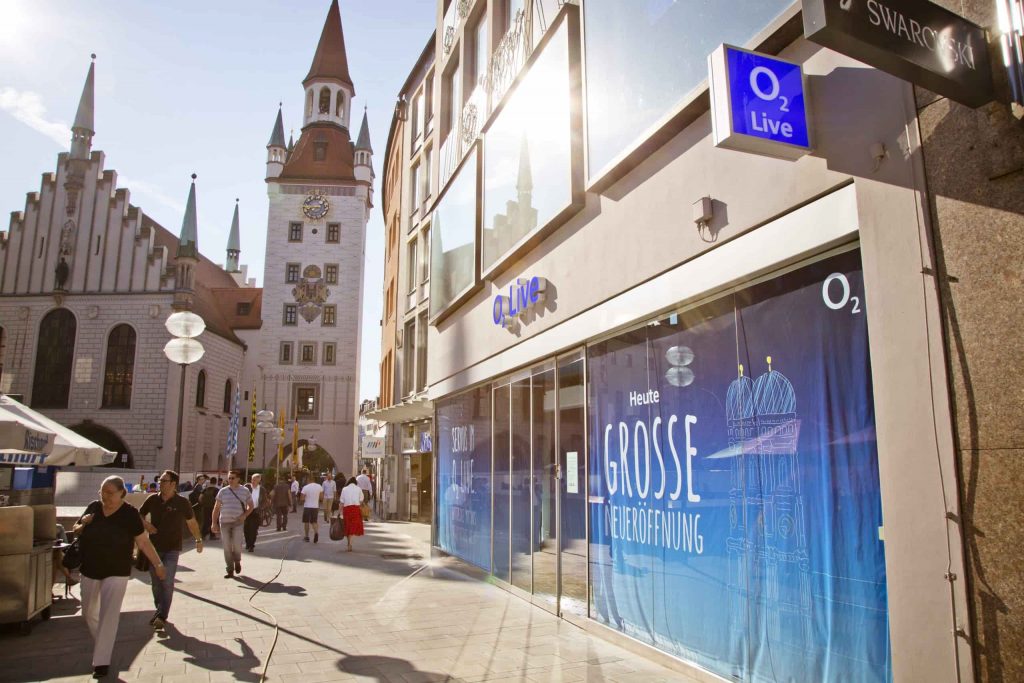
3. Orange
- Orange is one of the main European operators for mobile and broadband internet services
- Operate strongly in France and Spain, Poland, Belgium, Romania.
- Pros: widespread network coverage, fast mobile internet speeds, good value for money
- Cons: slower internet speeds in remote or rural areas
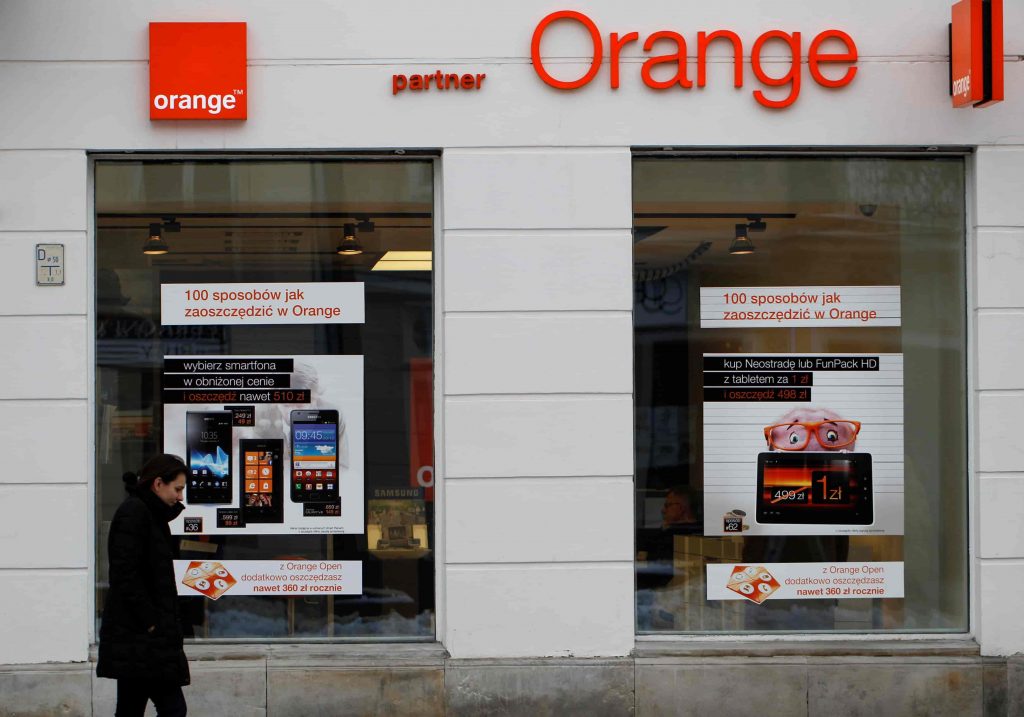
4. T-mobile/Deutsche Telekom
- A popular mobile operator in several countries across Europe
- Operate strongly in both Central and Eastern Europe
- Pros: reliable mobile internet access, fast mobile internet speeds, affordable price.
- Cons: limited data in remote areas, networks may experience congestion
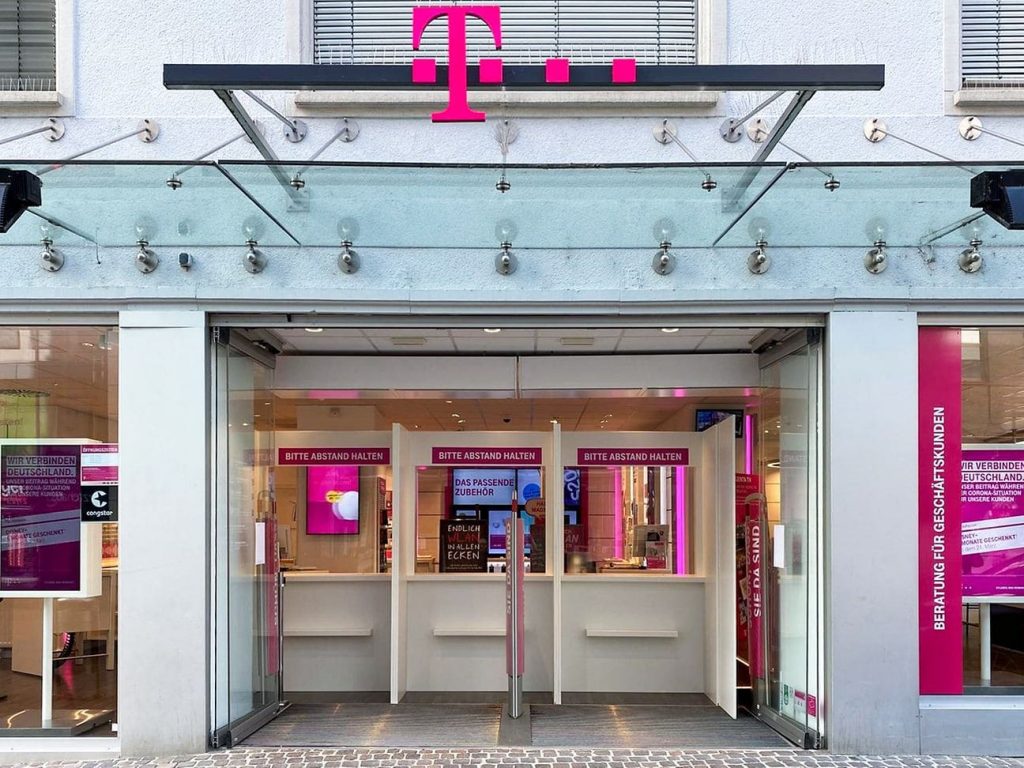
5. Three
- Three is the fourth-largest mobile network operator in the United Kingdom
- Operate strongly in several countries in Europe, Ireland, Italy, Sweden, and Denmark.
- Pros: generous data allowances, competitive pricing, attractive roaming packages, free access to certain streaming platforms
- Cons: limitation coverage in rural areas, international roaming limitation

IV. Europe eSIM – The Best Way To Get Internet In EU For An Extended Period
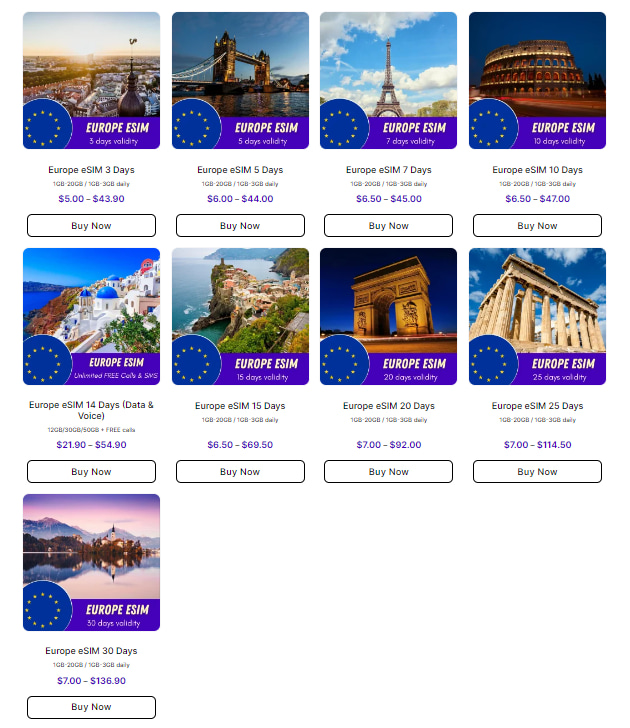
Which is the best option to get mobile internet in Europe? Our answer is the international eSIM. This virtual SIM allows you to activate a cellular plan from your carrier without needing a physical SIM Card.
Acquiring this eSIM is incredibly convenient through online stores, and we highly recommend using europe-esim.com. It offers a range of eSIM plans at an affordable price for tourists to get unlimited data for your Europe trip. Moreover, with the eSIM number, you can call different places across Europe without any additional charges.
Enjoy 7 days of Europe data from $6.50. No roaming fees with 1-20GB using the Europe eSIM 7 Day Plan. Buy now for hassle-free connectivity during your trip!:
V. FAQs
1. Which European country has the best Internet speed?
The channel island of Jersey has been crowned as Europe’s broadband champion of 2023, with an average download speed of 265 megabits per second (Mbps). This is according to an annual study by cable.co.uk, based on the network connection speeds found in 220 countries and territories around the world.
2. How can I get the Internet while traveling to Europe?
For convenience to stay connected in Europe, it’s okay to use SIM or eSIM. However, if your mobile devices support eSIM, we highly recommend you use eSIM because it’s very convenient, easy-to-use, flexible and has many options for your needs.
3. Can I use my mobile data from my home country in Europe?
It depends on your mobile operator and your home country. If you are from within the European Union (EU), you can benefit from the “Roam Like at Home” policy, which allows you to use your mobile data, calls, and texts in other EU countries without additional charges.
4. Can I buy a SIM card in one European country and use it in another?
In most cases, you can use a SIM card purchased in one European country in another European country. However, be aware that there may be limitations, such as different roaming rates or restrictions on certain services.
VI. Conclusion
Mobile internet in Europe is generally of high quality and offers widespread coverage in most countries. There are many different options available these days for travelers to stay connected to mobile internet when visiting Europe. Whether it’s buying a local SIM card, using public WiFi, or opting for an eSIM data plan, you have flexibility in how you access the internet on your device while on your trip. While each choice has pros and cons, we recommend considering an eSIM data plan as one of the best overall options.
We hope this article provides useful information to help you choose the right mobile internet solution based on your travel plans and needs. Staying connected makes exploring Europe even more enjoyable.



